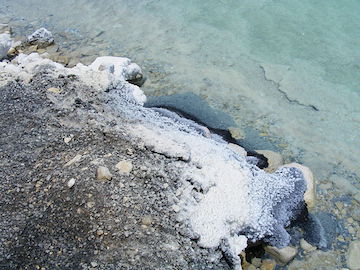420316-changing salinity.jpg

Salt covered stones at Dead Sea. Credit: Wikipedia, xta11.
The oceans transport heat around the globe, keeping the temperatures fairly mild across the entire planet. But a big change in ocean salinity could change that pattern, altering ocean currents and raising global temperatures.
That’s not likely to happen anytime soon. But it could be happening on planets in other star systems. And that could expand the range at which a planet can sustain life.
That range is known as the “habitable zone.” It’s the distance from a star where temperatures are just right for liquid water to exist on a planet’s surface.
Researchers in the U.K. wondered if there was a way to expand that zone. In particular, they used computers to simulate ocean currents on hypothetical Earth-like planets. They looked at three levels of salinity: freshwater, salinity comparable to Earth’s oceans, and the very high salinity found in the Dead Sea.
On Earth, warm water travels toward the poles at the surface. It cools and sinks, then travels toward the equator at great depths.
But the simulations showed that if you make the oceans much more salty or much less salty, that pattern flips. Water travels to the poles at depth, then rises and travels toward the equator at the surface. That would warm a planet’s polar regions. The resulting rise in global temperatures would reduce the amount of ice, which would allow the planet to absorb more energy from its star, making it warmer still.
That would expand a star’s habitable zone — perhaps making more planets comfortable homes for life.

